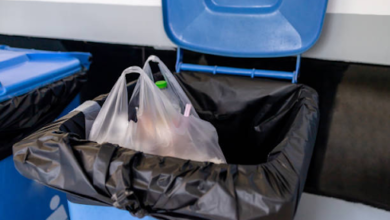Understanding the Healing Timeline: The Phases of Tattoo Recovery

Getting a new tattoo is an exciting process, blending art, personal expression, and a bit of science. While much attention is given to selecting the perfect design and finding a skilled tattoo artist, understanding the healing process is equally important. A tattoo is not just an artistic statement; it’s a wound on your skin that needs care and time to heal properly. Understanding the tattoo healing time is crucial for anyone looking to get inked, as it not only impacts how the tattoo looks after healing but also plays a significant role in preventing infection and ensuring the longevity of the tattoo’s vibrancy.
This article will take you through the different stages of tattoo recovery, offering insights into what to expect during each phase and how to care for your new ink to ensure it heals beautifully and lasts a lifetime.
Phase 1: The Inflammatory Phase
The first stage of tattoo healing begins immediately after your tattoo session. This phase, known as the inflammatory phase, typically lasts for the first 2-3 days. During this time, you can expect:
Redness and Swelling: The tattooed area will appear red and may swell, similar to other types of skin injuries. This is your body’s natural response to the needle punctures as your immune system works to protect the wound from infection.
Pain and Tenderness: It’s normal for the tattoo to feel sore and tender during these first few days. The level of discomfort varies depending on the tattoo’s location, size, and pain tolerance.
Bleeding and Oozing: Some bleeding is common, especially for large or densely packed tattoos. You might also notice a plasma or ink ooze, which helps in forming a protective scab over the tattoo.
Care Tips:
- Keep the tattoo clean by gently washing it with mild, fragrance-free soap and lukewarm water.
- Apply a thin layer of recommended aftercare ointment to keep it moisturized.
- Avoid tight clothing that might rub against the tattoo.
Phase 2: The Initial Healing Phase
Following the inflammatory phase, the tattoo enters a period of initial healing that can last from day 4 to approximately 2 weeks. During this time, the most noticeable changes include:
Itching and Flaking: As the skin begins to heal, it will start to itch and flake. This is a sign that your body is shedding dead skin cells and generating new ones. Resist the urge to scratch or pick at the tattoo.
Scabbing: Depending on the tattoo’s size and your body’s healing process, light scabbing may occur. It’s crucial not to pick at scabs, as this can remove pigment and lead to patchiness or scarring.
Care Tips:
- Continue regular cleaning and moisturizing, adjusting the frequency as needed based on dryness and your skin’s response to the aftercare product.
- Keep the tattoo out of direct sunlight and avoid soaking it in water (no swimming or long baths).
Phase 3: The Late Healing Phase
From weeks 2 to 4, your tattoo is in the late healing phase. The surface of the skin may appear healed, but deeper skin layers are still repairing. During this stage, you might notice:
Reduced Itching and Flaking: As the healing progresses, itching and flaking will diminish.
Brighter Tattoo Colors: As the upper layers of skin heal and become more transparent, the colors of your tattoo will start to look brighter and clearer.
Care Tips:
- Moisturizing remains essential to help the skin heal and prevent dryness.
- Continue to protect the tattoo from the sun with clothing or a high-SPF sunscreen specifically designed for tattoos.
Phase 4: The Maturation Phase
The final phase of tattoo healing can take several months as the deeper layers of skin continue to heal. During this time:
The Tattoo Settles: The ink settles in the skin, and the tattoo’s final appearance becomes stable.
Skin Regains Texture: Your skin’s texture will normalize, and any temporary changes in sensation (like numbness or increased sensitivity) in the tattooed area will resolve.
Care Tips:
- Long-term care involves keeping the skin moisturized and protected from the sun to maintain the vibrancy of the tattoo.
- Consider using products designed to enhance tattoo longevity and keep the skin healthy.
Recognizing Healing Issues
While following the proper aftercare routine, it’s essential to be vigilant about signs of complications, such as excessive redness, warmth, severe swelling, or pus, which could indicate an infection. If you experience these symptoms or if the tattoo doesn’t seem to be healing properly, consult a healthcare provider for advice.
Conclusion
The journey of a tattoo from a fresh wound to a fully healed piece of art is fascinating and requires patience and proper care. By understanding the healing timeline and adhering to recommended aftercare practices, you can ensure that your tattoo heals correctly and remains vibrant for years to come. Remember, each person’s healing process is unique, and some may heal faster or slower than others. Listening to your body and taking care of your tattoo will help you achieve the best possible outcome for your new ink.



